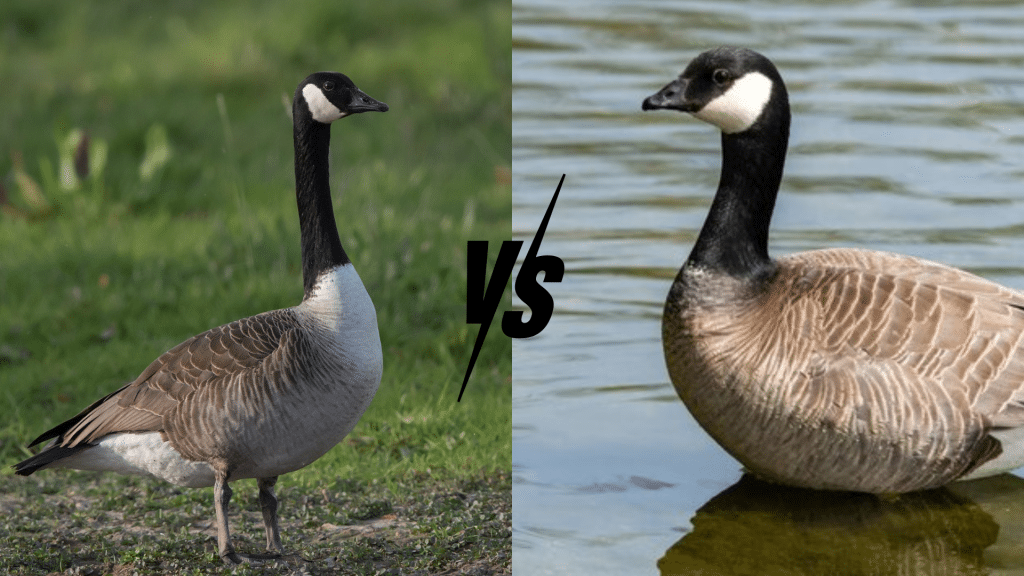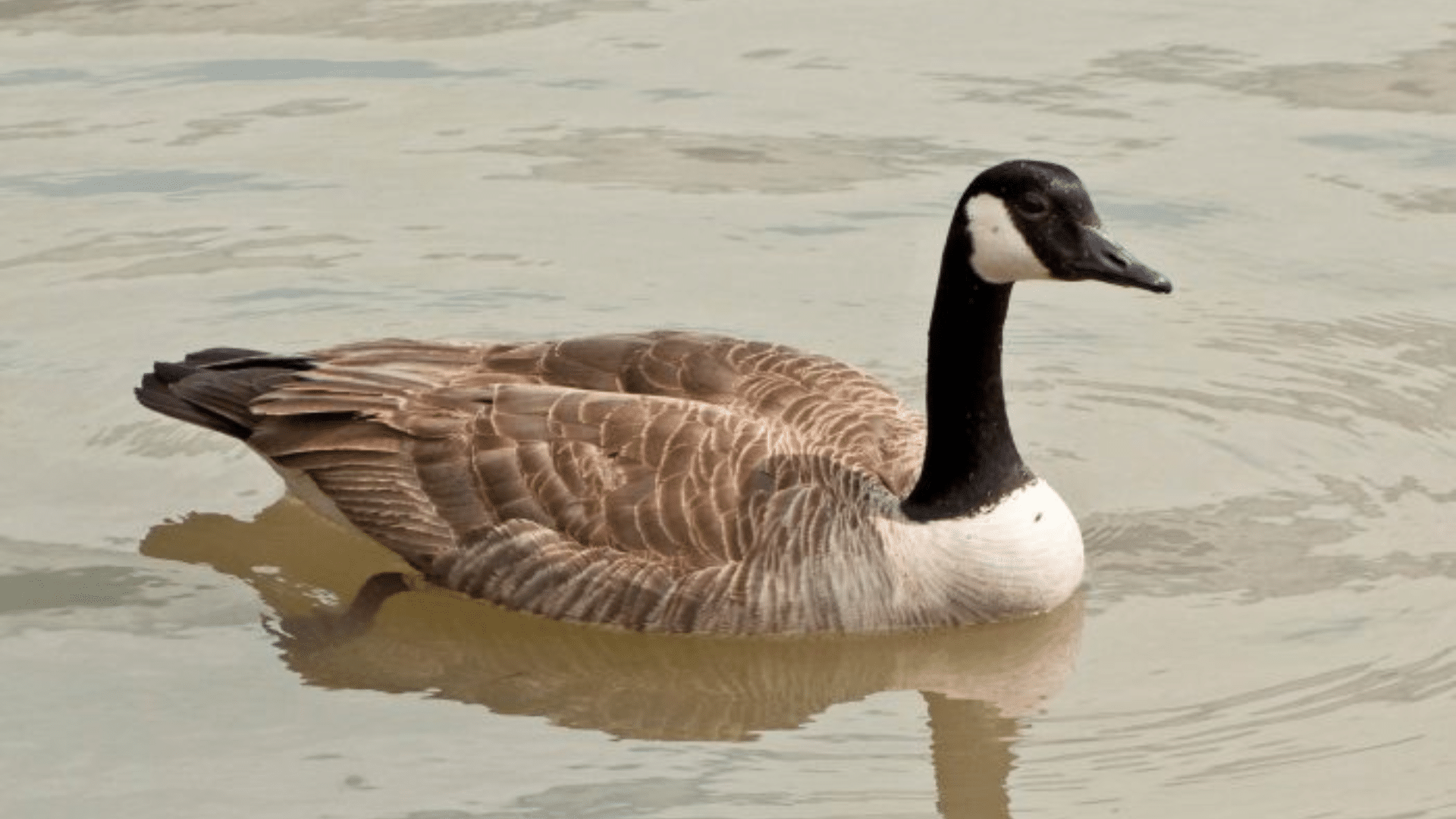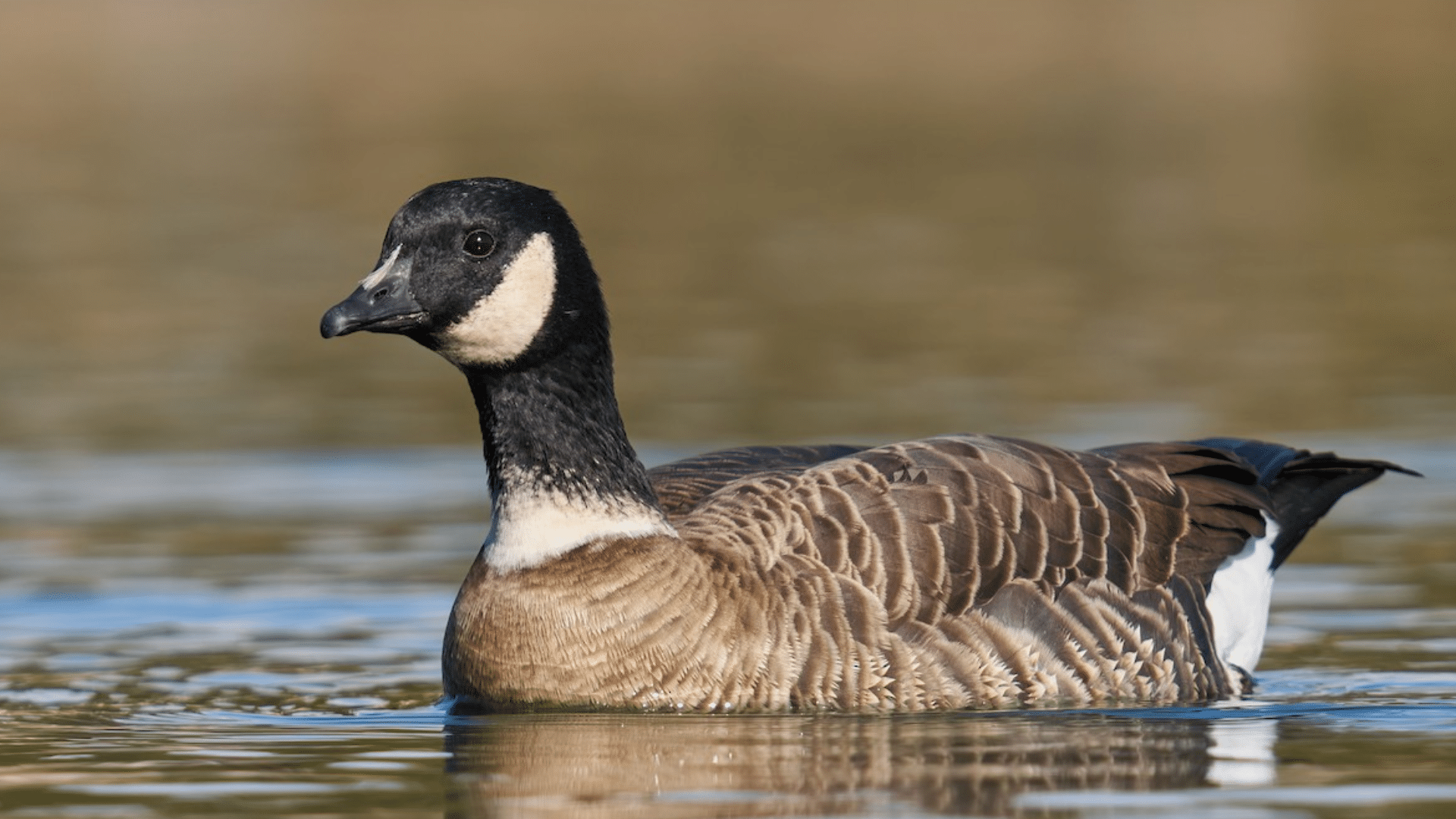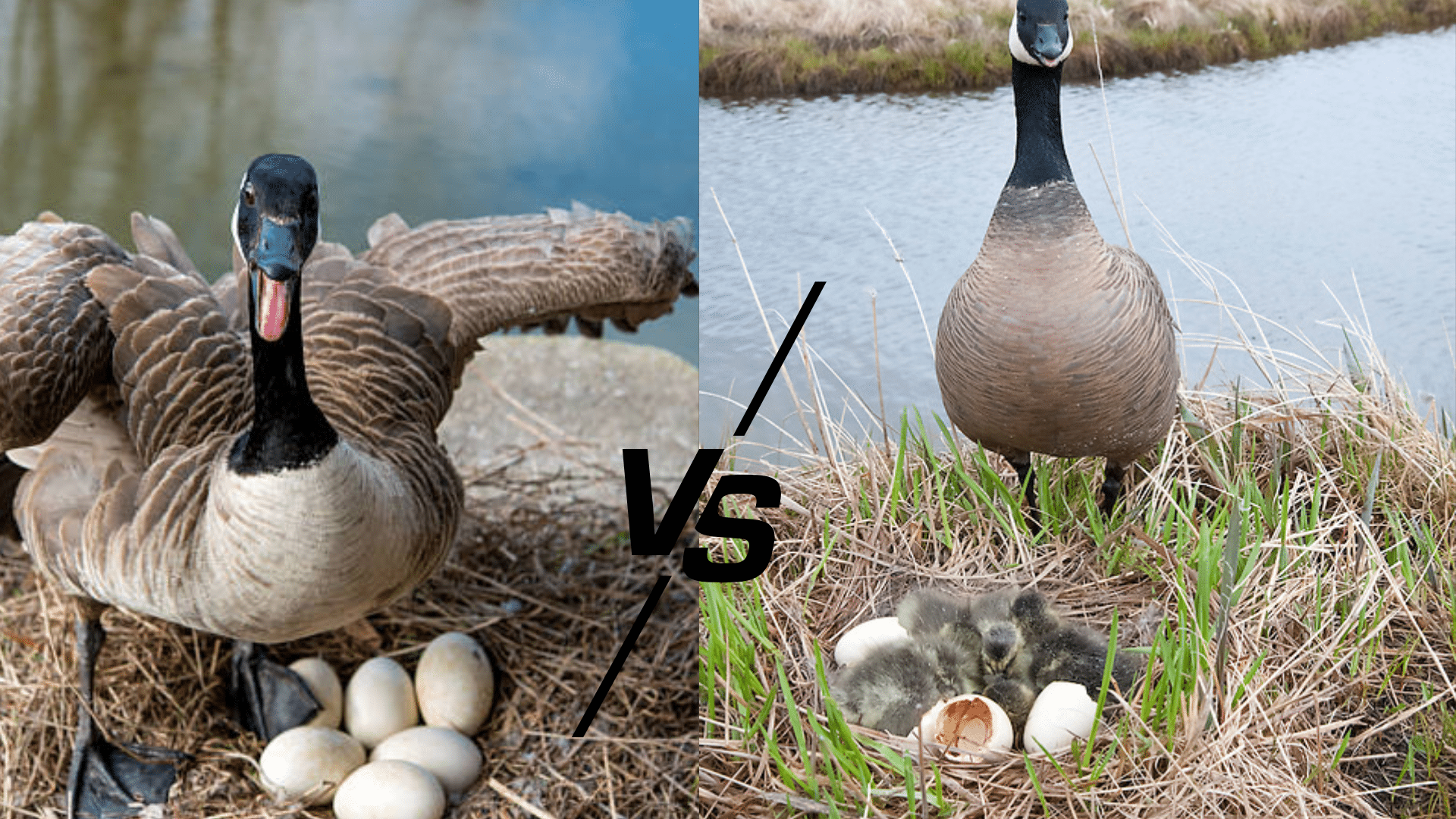That honking giant waddling through your local park might not be what you think it is.
For decades, even scientists lumped Canada Geese and Cackling Geese into the same species, until they realized these birds were living completely separate lives.
Sure, they both sport the classic black head and white chin strap combo, but look closer and you’ll spot some sneaky differences.
One’s a gentle giant, the other’s a compact powerhouse. Both will steal your sandwich given the chance, but only one will truly tower over you while doing it.
Ready to become a goose detective?
What’s the Difference?
Given their similar looks, it’s easy to assume that the Canada Goose and the Cackling Goose are simply different names for the same bird.
Historically, they were considered the same species, but in 2004, researchers made a distinction based on noticeable differences in their size, behavior, and physical characteristics.
1. Canada Goose: Majestic and Bold
The Canada Goose is larger and more robust. It thrives in both urban and rural areas and is commonly found in a wide range of habitats.
Its long neck and deeper honking calls distinguish it from smaller geese, making it easily recognizable across its vast range.
Larger, these geese are commonly found across North America, particularly in urban and suburban areas. Known for their long necks and deep honking calls, they have become iconic in many landscapes.
2. Cackling Goose: Small but Mighty
In contrast, the Cackling Goose is smaller and more compact compared to the Canada Goose, with a shorter neck and higher-pitched calls. It typically resides in cooler, more remote areas, often in small flocks
Smaller and more compact compared to the Canada Goose, with a shorter neck and higher-pitched calls. It typically resides in cooler, more remote areas, often in small flocks.
How Do They Compare in Size?
One of the easiest ways to distinguish between them is by size. Let’s break it down:
| FEATURE | CANADA GOOSE | CACKLING GOOSE |
|---|---|---|
| Weight | 7-14 lbs (3-6.5 kg) | 2-3 lbs (0.9-1.4 kg) |
| Neck Length | Long | Shorter |
| Body Proportions | Larger, more elongated | Compact and stocky |
The Cackling Goose is about half the size of the Canada Goose. It has a shorter neck and a rounder head, while the Canada Goose has a longer neck and a more tapered, angular head.
What’s in The Sound?
Geese are known for their loud, distinctive honking, but the Canada Goose and Cackling Goose have completely different vocal signatures that are easy to distinguish once you know what to listen for.
The Canada Goose produces a loud, deep, resonant honk that carries across great distances; think of it as nature’s foghorn.
In contrast, the Cackling Goose’s call is higher-pitched and squeaky, almost like a series of sharp, staccato notes that sound softer and more distinct. It’s the difference between a bass guitar and a piccolo.
Once you hear both calls side by side, you’ll never confuse them again.
In Flight? Watch the Wings
If you spot a goose in flight, you can tell which species it is by observing their distinct flying patterns and formations:
| FEATURE | CANADA GOOSE | CACKLING GOOSE |
|---|---|---|
| Flight Speed | Slower, more powerful wingbeats | Faster, more rapid wingbeats |
| Formation | Wider V-shape | Tighter, more compact V-shape |
Canada Geese typically form a broader V-formation with slower, more deliberate wingbeats that showcase their larger size and strength.
On the other hand, Cackling Geese fly in tighter, more compact formations with faster, more rapid wingbeats that reflect their smaller, more agile build.
Watch for these flight patterns next time you see geese overhead: the formation style and wingbeat rhythm will give away their identity even from a distance.
Where Do They Go: Breeding and Migration Ranges
Though both birds live in North America, their nesting spots and travel habits are quite different.
Canada Geese are the homebodies of the goose world, often choosing urban parks, golf courses, and suburban ponds for year-round living, while Cackling Geese prefer remote Arctic tundra for breeding and follow strict seasonal migration routes.
Canada Goose
- Breeding Range: Across most of Canada and parts of the U.S.
- Migration Range: Found throughout North America, including cities and towns
Cackling Goose
- Breeding Range: Remote northern regions of Canada and Alaska
- Migration Range: Travels south in winter but stays mostly in northern regions
Canada Geese are commonly found in urban and suburban areas across North America, while Cackling Geese prefer remote northern regions, migrating south in winter but staying largely in colder areas.
How Can You Identify a Cackling Goose from a Canada Goose?
These two geese may look alike at first glance, but there are a few key clues to spot the difference.
From neck length to voice, here’s how to quickly tell which one you’re seeing.
1. Neck Length
- Cackling Goose has a short, stubby neck.
- Canada Goose shows a long, elegant neck that stands out.
2. Head Shape
- Cackling Goose has a small, round head.
- Canada Goose features a more pointed and angular head.
3. Bill Size
- Cackling Goose sports a tiny, stubby bill.
- Canada Goose has a longer, more slender bill.
4. Body Size
- Cackling Goose is smaller, stocky, and compact.
- Canada Goose is much larger with a stretched, graceful body.
5. Voice
- Cackling Goose makes a high-pitched, squeaky cackle.
- Canada Goose gives a deep, loud honk you can hear from far away.
Why Should You Know the Difference?
Telling these geese apart isn’t just a fun challenge for birdwatchers; it actually plays an important role in wildlife science.
Researchers and conservationists rely on correct identification to monitor migration patterns, population shifts, and overall species health.
However, understanding the difference also enhances your own birdwatching experience.
Instead of saying just another goose, you will start noticing details that reveal how unique each bird really is.
Canada Geese often share space with us in parks, lakes, and urban areas, contributing to local ecosystems.
Cackling Geese, while more secluded in remote northern habitats, are equally vital to the regions they call home.
Final Thoughts
Now that you know the secrets behind these feathered lookalikes, you are part of an exclusive club: people who can actually tell these birds apart.
Whether it’s the booming honk of a Canada Goose or the squeaky chatter of a Cackling Goose, you will never see them the same way again.
These doppelgangers prove that nature loves a good plot twist. What looks identical at first glance often hides remarkable differences just waiting to be noticed.
So go ahead, impress your friends at the next park visit.
























